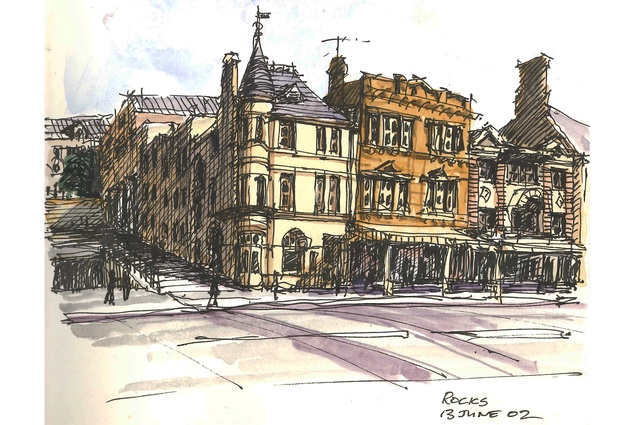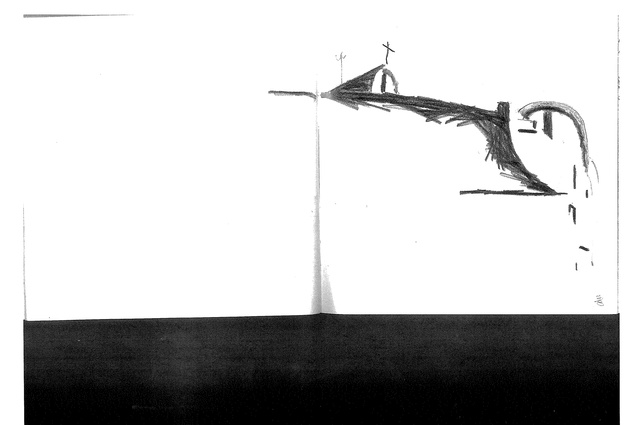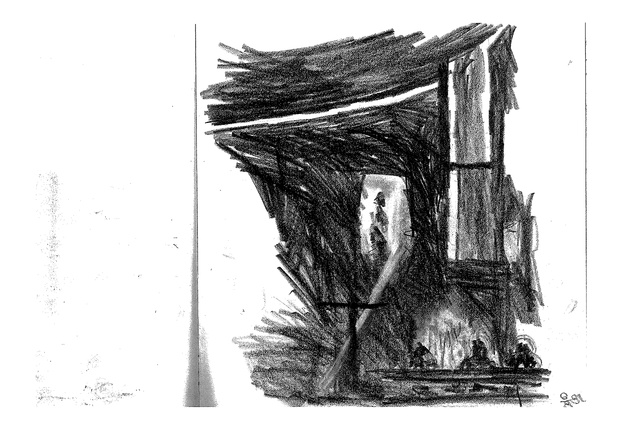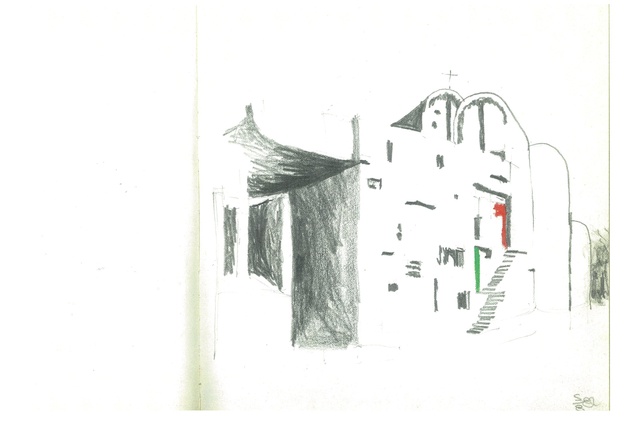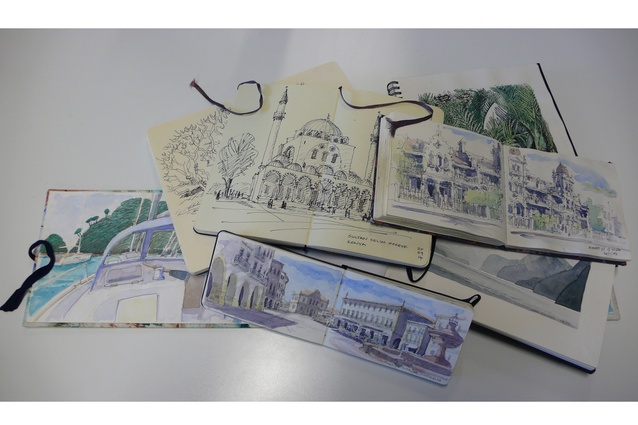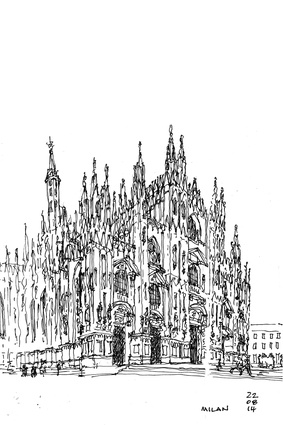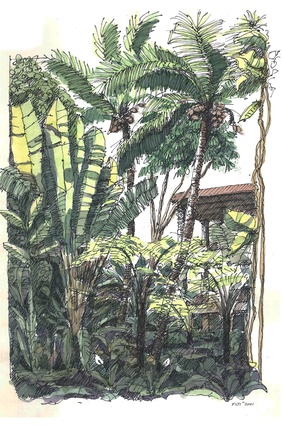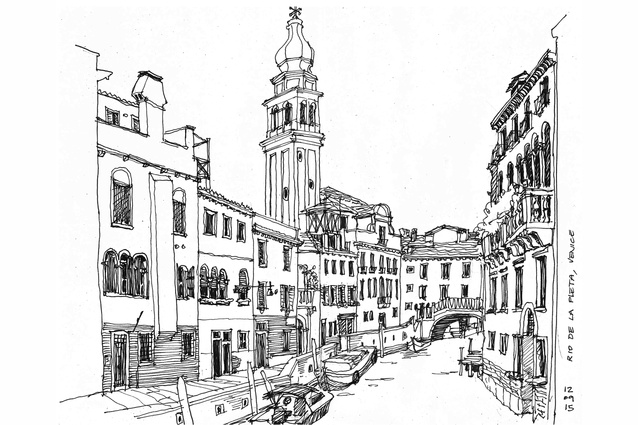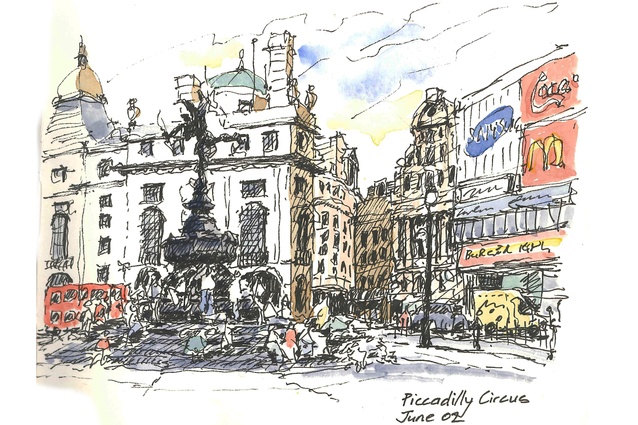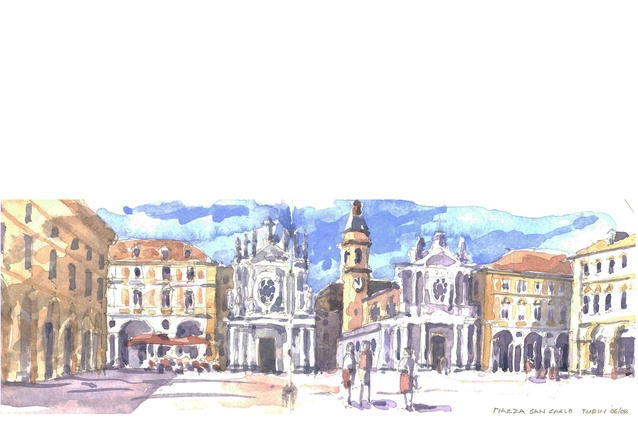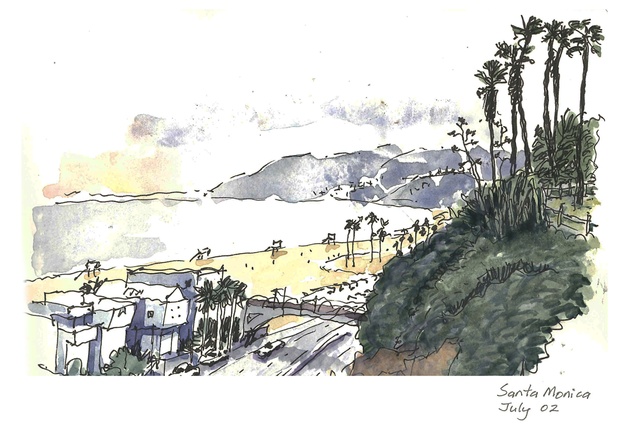Summer series #3: Grand Tour drawings
Throughout history, architects have sketched and painted their way around the globe to try and understand other architects’ buildings. Here, in the third installation of our Grand Tour summer series, we showcase the sketches of New Zealand architect Pete Bossley from Bossley Architects and Richard Harris from Jasmax.
PETE BOSSLEY
Where was this sketch made, and who is the architect?
This is the famous Ronchamp in France by Le Corbusier. Ronchamp was a building I had wanted to visit for years. I had been hitch hiking around Turkey and Italy and needed to visit Ronchamp on my way to Finland to look at Alvar Aalto works. It was the most moving architectural experience I’ve ever had.
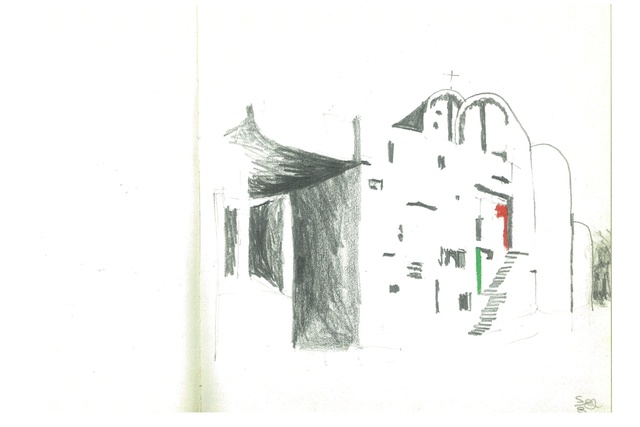
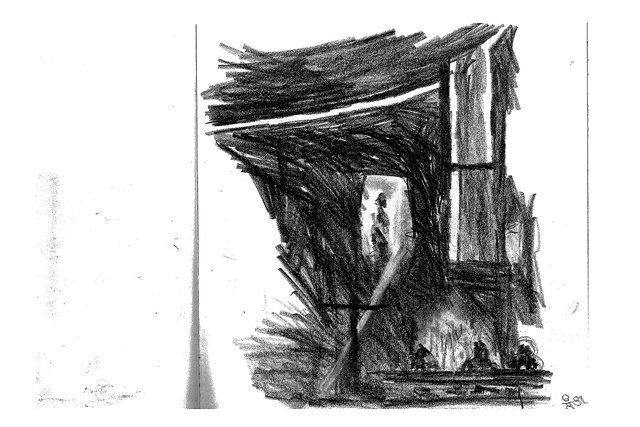
The sketch below was made in Sri Lanka: a small group of architects and other friends decided over dinner one night to explore the works of [renowned Sri Lankan architect] Geoffrey Bawa. We had a great trip.
Why did you choose to draw this site?
I did this abstract in a bus, thinking about the dark cool houses the villagers have, often with dirt floors. What’s it like to be inside, in the gloom, whilst the bright colorful world crashes around outside?
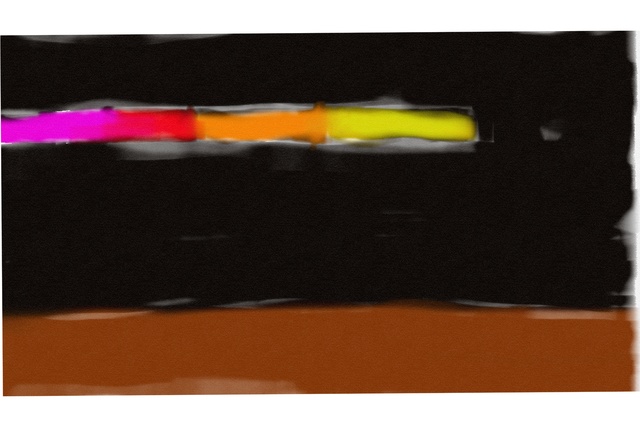
How long does it take to produce your drawings?
Not long. I like the immediacy of a quick sketch. If I labour over them they become overworked and lose their energy and spirit.
What materials do you draw with?
I like pencil, felt pens and water colours on whatever paper or sketchbooks I can find when travelling.
Lately I’ve been doing more sketching on a Samsung tablet. I call them ‘tings’: a cross between a ‘painting’ and a ‘thing’ [the drawing above is a ‘ting]’.
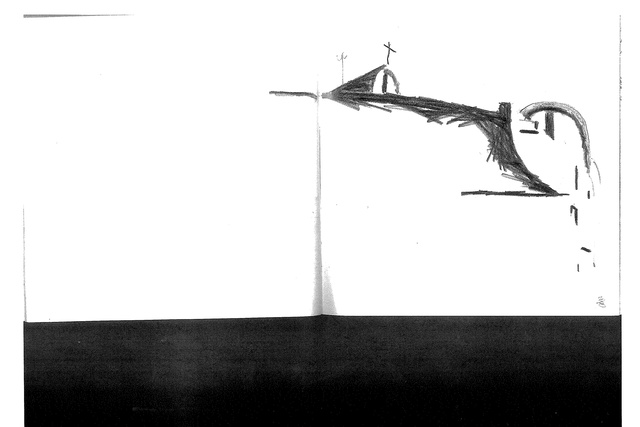
Why do you enjoy sketching while travelling?
Sketching while travelling is a great way to fill in time waiting at airports, on trains etc. Mainly though, it provides a wonderful way of understanding and recalling places and people. I have piles of sketchbooks from 40 years of looking, and when I look back through them all sorts of ideas, memories, sounds and smell coming flooding back. The camera just doesn’t provide the same intimacy with the place.
Have you received any interesting feedback from passers-by?
Passers-by are often intrigued and strike up conversations. Once I got press-ganged into doing a portrait of a local hood in Turkey. I tried to refuse but he insisted. By the time I began we were surrounded by about 20 of his heavily mustachioed mates. Pressure! It was an awful portrait: stiff and more expressive of my mild terror than of him.
RICHARD HARRIS
How long do your sketches normally take to produce?
A lot of my travel is done with friends so speed and quarantining a bit of free time are important. I find it easiest to combine sketching with lunch and coffee stops although I have dunked my brush in my coffee more than once – good for sepia tones! I tend to select tables (with umbrellas) that have the best view of buildings or squares.
What methods do you use?
I use a variety of techniques depending on the time available and my mood. The quickest sketches are often the best. In these ones I start with pen or pencil on the paper in one corner and don’t lift the pen until it is finished. I have always had an attraction to line drawing without hatching or shadow. The process of manually constructing the ‘wire frame’ appeals to me – especially when speed is required.
Alternatively I also like watercolours with only the minimum of pencil guidance (4a) and letting the watery colour tell the story rather than the ink line. The trick with watercolours is letting the white paper work for you and keeping the luminosity of the work through minimum layers.
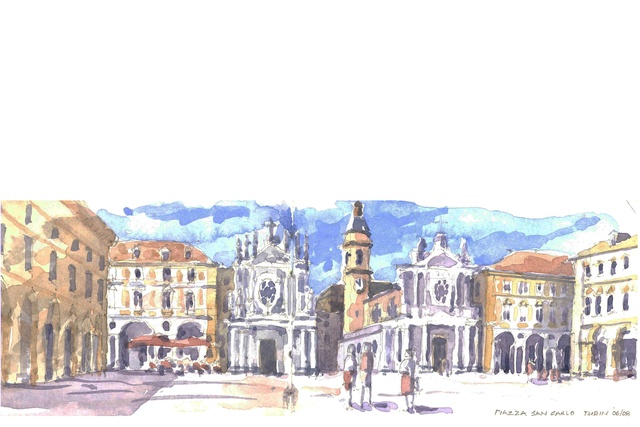
Is this your typical medium? And what kind of paper/sketch book do you use?
These sketches are almost always done while travelling or in transit. I try and carry both a Moleskin notebook and a small watercolour book with me while travelling. I also carry a Unipin fine line black ink pen that is water and fade proof, soft pencils, a small watercolour brush and a travellers Windsor and Newton watercolour set. On my last trip I took a small selection of watercolour pencils too.
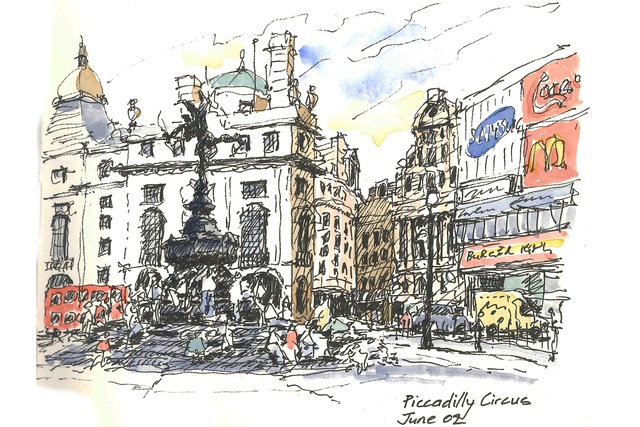
Why do you enjoy drawing while traveling – what have you learnt?
I find that observational drawing and watercolours require you to analyse your subject and this makes you see things more clearly. I don’t seek perfect replication and depending on my mood, I am happy to let the drawing or watercolour take over and emotion come out. I keep all my sketches ‘trapped’ in books. I prefer it that way. There is something about a bad sketch that becomes good when sandwiched between a variety of other sketches in a book. Completed books become journals full of memories of places travelled and the joy of mark making.
What I have learnt is that the process of recording requires a concentration that etches the memory so that I can recall in detail old sketches. I was in a restaurant in Chicago a couple of years back and the waitress said she was from Guanajuato. I had sketched a plaza there a couple of years earlier so I replicated the sketch from memory on the paper tablecloth and she recognised it immediately, including the building with a balcony that opened off the room she had learnt ballet in.
Do passers-by respond?
I enjoy chatting to total strangers who stop to look at what I’m doing. Sometimes a crowd even gathers and want to see what else I have drawn. Others show you their work and that is always a pleasure – no matter what the quality.
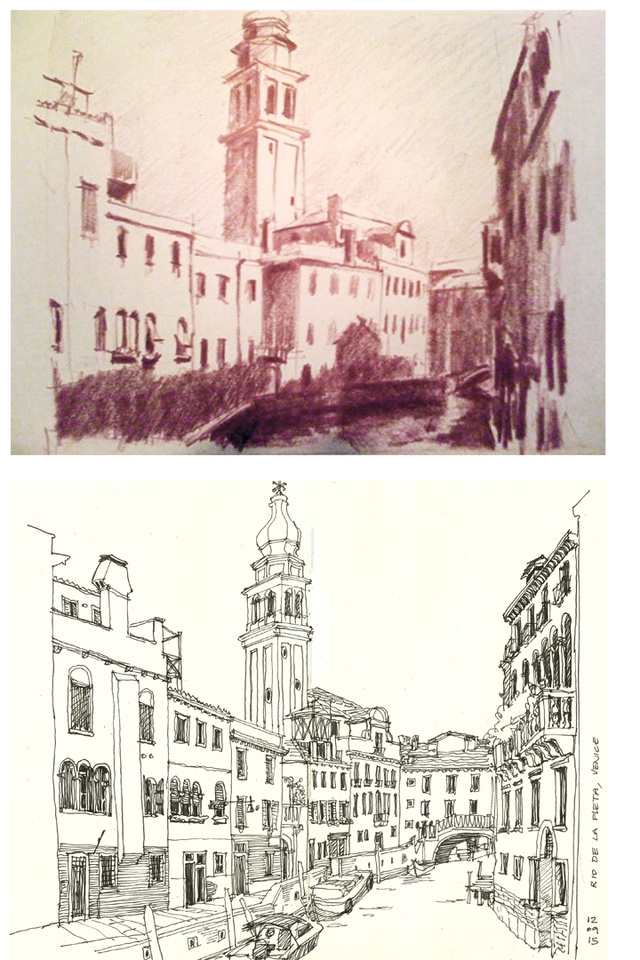
“I recently arrived back from a trip to Europe and showed Richard Dodd [associate principal at Jasmax] a sketch I did while in Venice. He said he did one from the same spot when he was there 25 years ago and I didn’t believe him until he showed me his evocative pencil sketch. There are 150 canals and 400 bridges in Venice and 25 years after Richard, I unknowingly stood in the same place on the same bridge and faced the same way to do a pen drawing.” – Richard Harris.
For more artworks by Richard Harris, see the slideshow above.

